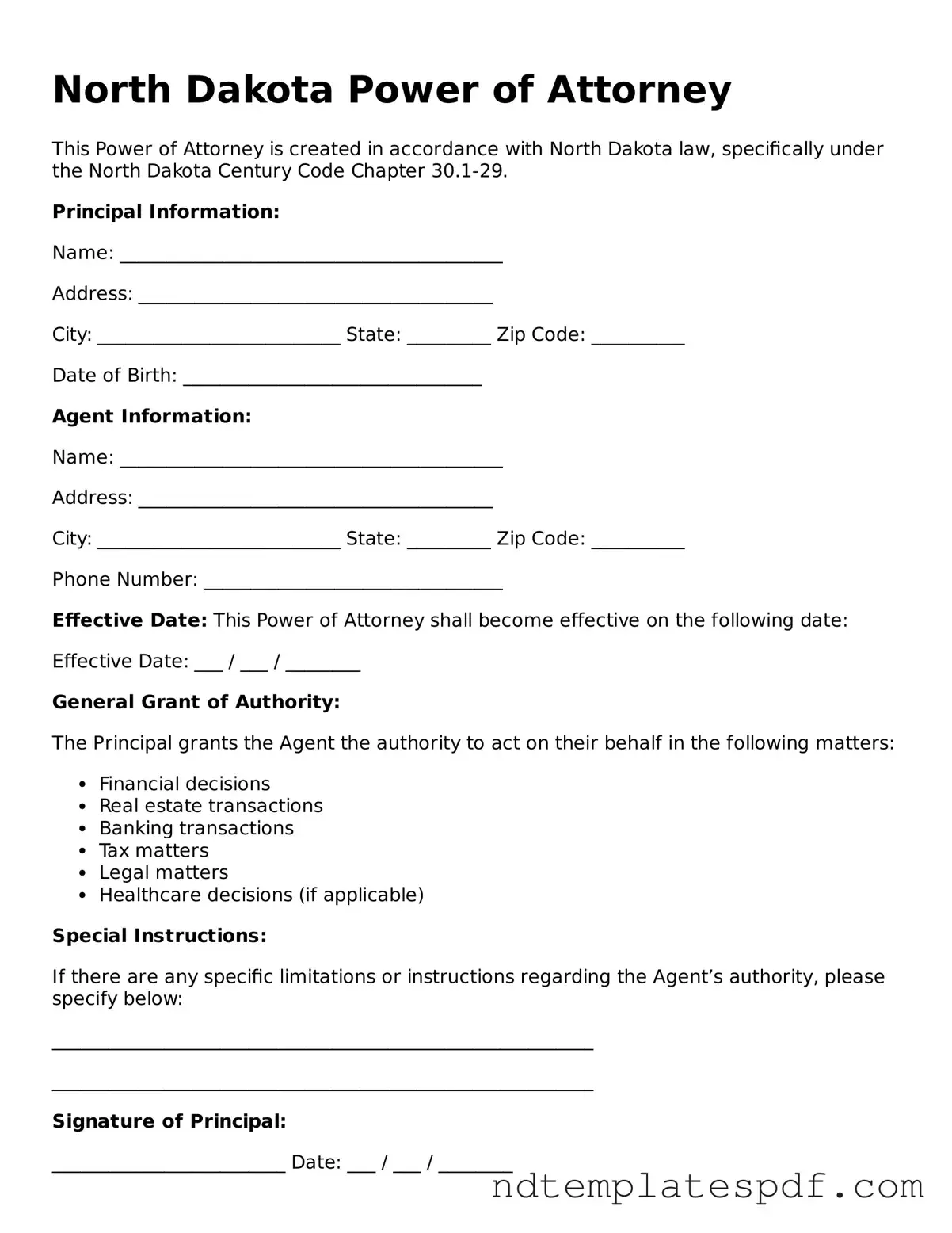Legal North Dakota Power of Attorney Document
A North Dakota Power of Attorney form is a legal document that allows an individual, known as the principal, to appoint someone else, referred to as the agent, to make decisions on their behalf. This form can cover a variety of areas, including financial, medical, and legal matters. Understanding the specifics of this document is essential for ensuring that your wishes are respected and that your affairs are managed according to your preferences.
Fill Out Document Now
